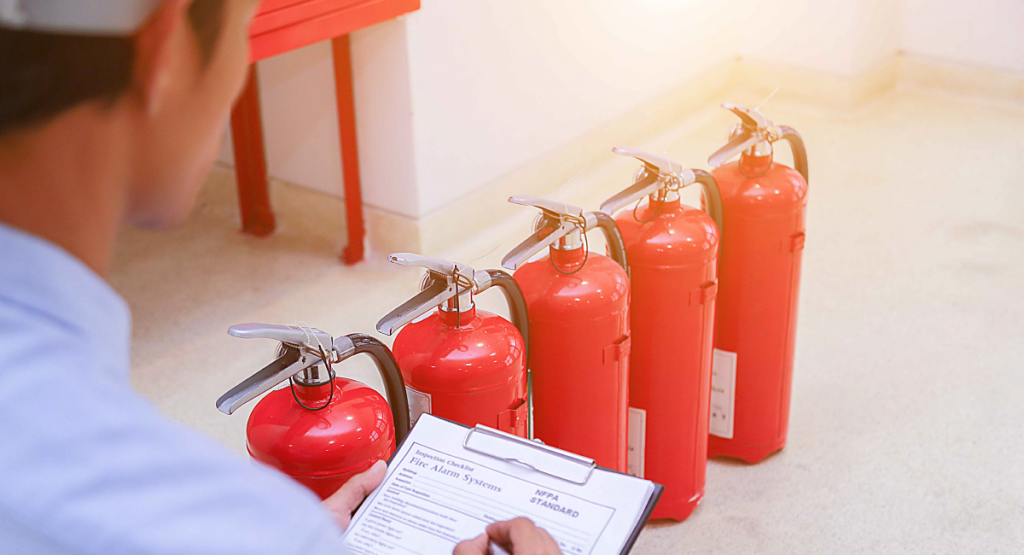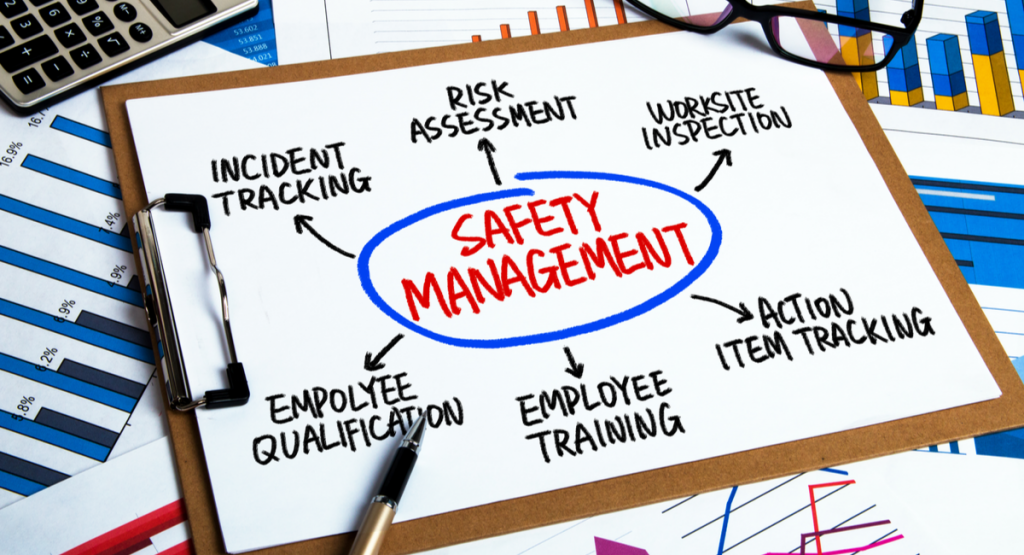
A Handy Guide to Kick-Starting and Running a Fire Extinguisher Business
All commercial establishments, homes, warehouses, public places, and vehicles require fire extinguishers. But this does not guarantee the success of a fire extinguisher business. Fire protection companies can remain successful only when they start the business with a coherent plan and do the right things. This guide will help you understand the ways to succeed in running a fire extinguisher service.
Read more: 10 Factors to Consider While Choosing a Safety Management Software
1. Prepare a business plan
As the first step towards starting a fire extinguisher business, prepare a thorough market analysis. Identify the target customer base, and check out the competition vis-à-vis the target customer base. Consider how the new company can offer competitive differentiation.
Next, prepare a business plan based on market analysis. Consider the services to offer. Fire extinguishers are a one-time purchase. The sustainability of the business rests on after-sales service, value add-ons, and upstream or downstream integrations. If the target area is residential, the new company could focus on a relatively new domestic market.
Make the business plan comprehensive. Co-opt the management structure, detail the finances, and draw up a marketing and sales strategy. Prepare a blueprint of the business operations to the business plan.
2. Gain conceptual acumen
The fire extinguisher business is technical. Success in the industry depends on knowing which fire extinguisher to use and how to repair or service each type of equipment.
There are different fire extinguishers.
- Class A fire extinguisher is for fire from paper, cloth, and plastics.
- Class B fire extinguishers are for fire from oils, grease, and paints.
- Class C fire extinguishers put off fires from electric sources.
- Class D fire extinguishers suit fires breaking out from combustible metals.
- Dry fire extinguishers serve domestic purposes to put off small fires.
In the USA, the Occupational Safety and Health Administration lay down standards for fire safety in the workplace. These standards stipulate the number of fire extinguishers per square foot, annual inspections, maintenance checks, hydrostatic testing, specifications on recharging the extinguishers, training the workforce, and more.
Gain resources from sources such as the National Fire Protection Association. Prepare documentation regarding the type of extinguishers suitable for each specific premise and use. Make sure the fire extinguisher service complies with such stipulations.
Institute a knowledge repository, accessible to the rank-and-file employees, quickly. Make it available through the field management suite. Novice field agents could easily access the repository and instantly take the right decision without follow up. Likewise, customer support agents could refer to the knowledge base to address customer queries.
Read more: Fire Prevention Vs. Fire Protection: How ReachOut Can Enable Effective Fire Prevention
3. Comply with legal and financial requirements
Register the business legally. Find out the exact requirements for the state and the local area from the Small Business Administration.
Any new business would need:
- General business license, by registering the company with the county clerk or other officially designated authority.
- State sales tax license
- Federal and state employee identification number and tax license
- Fire extinguisher service might require a minimum mandated insurance amount
- Bank accounts
- Small business loan, if start-up capital is inadequate
Many states regulate the sale and service of fire extinguishers. Get the required licenses. For instance, the US Department of Transportation offers a hydrostatic testing permit to service high-pressure fire extinguishers. Servicing portable extinguishers or low-pressure extinguishers requires a Class A hydrostatic testing certificate.
Approach the State Fire Commissioner and local fire marshals for the precise licensing requirements in the operations’ targeted area.
Download FREE GUIDE: Compliance Risk Assessment for Fire Safety
4. Set up the required infrastructure
Set up the required infrastructure to operate the business.
- Set up an office to coordinate operations and as a command-and-control center
- Have secure warehouses to store fire extinguishers and other supplies
- Procure commercial vehicles and testing equipment to get the job done
- Source uniforms, safety kits, signage, exit lights, and other accessories
- Buy consumables such as office supplies, first aid kits, batteries, etc.
- Train the workforce. The National Fire Protection Association, an international non-profit organization, offers several training and certification programs.
The type and nature of the infrastructure need to be based on the business plan. For instance, if the new business enters into a contract to repair and maintain fire extinguishers, the firm should purchase a vehicle to transport the cylinders, recruit field agents to collect the cylinders, and hire technicians to repair the cylinders.
5. Set up inventory management system
The success of a fire extinguisher business depends on efficient inventory management. Identify a list of vendors. The state fire commissioner has a list of registered wholesale suppliers of firefighting equipment.
In today’s uncertain business environment, marked by COVID-19 lockdowns and other disruptions, it makes sense to have multiple vendors and source supplies from two or more vendors simultaneously.
Develop an inventory management software and sync it to the field management suite. Make sure the field agents go to service a location with adequate fire extinguishers and supplies. This improves the chances of closing the sale immediately and making prompt repairs.
6. Adopt a comprehensive field service management suite
Profits are wafer-thin in today’s highly competitive business environment. The key drivers of profits are innovation and internal efficiency.
A field service software is indispensable for a fire service start-up. A field management suite boosts internal efficiency, accelerates delivery of service, and boosts customer satisfaction.
Read more: How Fire & Safety Industry Can Improve Efficiency With Field Service Management Software

A good field management software:
- FSM auto-generates quotes and estimates on inputting key parameters or variables.
- Automates scheduling and dispatching. The system assigns field agents to open work orders and allows live tracking of technician movement.
- Scheduling and dispatching – two of the most arduous, time-consuming, and resource-intensive tasks, become seamless.
- FSM matches the right field agent or technician for the job. The field management suite links to the HRIS to see technician availability, skill-sets, and other information.
- FSM syncs with inventory-management suite, CRM, and other enterprise systems to coordinate operations.
- It makes audits and inspections seamless. The field management suite enables the automatic capture of data and co-opts images and video to inspection forms.
- It integrates invoicing and payments. The suite auto-generates invoices on completion of the installation and facilitates the contactless payment collection.
By signing up for the ReachOut suite, field agents, supervisors, managers, and even customers can access intuitive field service mobile apps with neat UI, making engagement easy.
A good field service management suite is easily scalable to expand as the business grows. It would also co-opt franchisees seamlessly if the company goes that route.
Fire protection companies are an essential and evergreen business. Good preparation, with an attention to detail and a focus on delighting the customer, guarantees success.
Read more: Fire Safety Inspection: A Complete Checklist

Are you looking for robust field service software to manage your fire extinguisher business? Try ReachOut today.
Ashmitha Chatterjee
Ashmitha works with ReachOut Suite as a creative writer. She collaborates with the Digital Marketing team to deliver engaging, informative, and SEO friendly business collaterals. Being passionate about writing, Ashmitha frequently engages in blogging and creating fiction. Besides writing, Ashmitha indulges in exploring effective content marketing strategies.
More posts by Ashmitha Chatterjee




